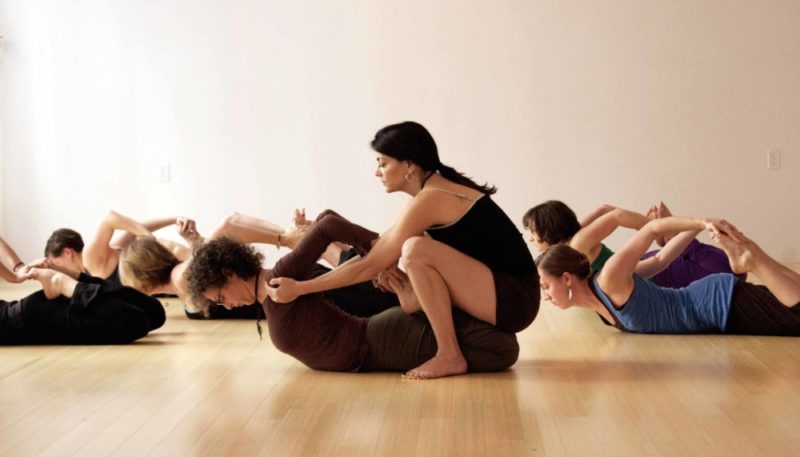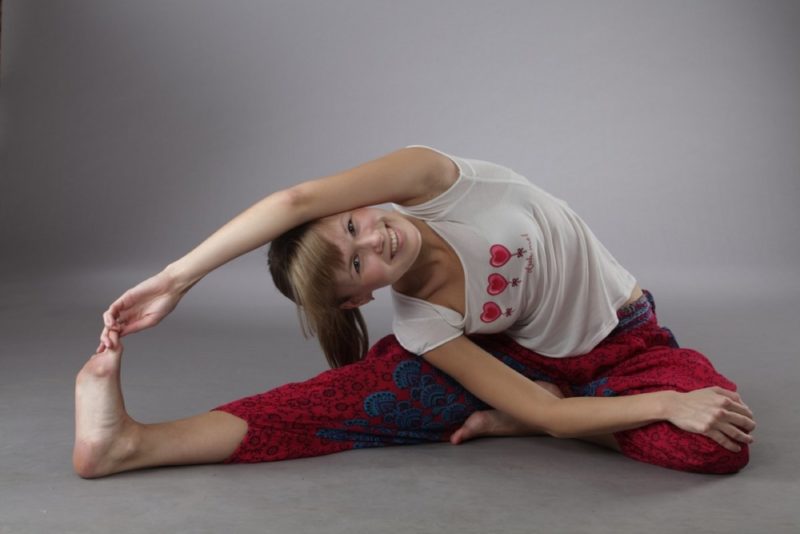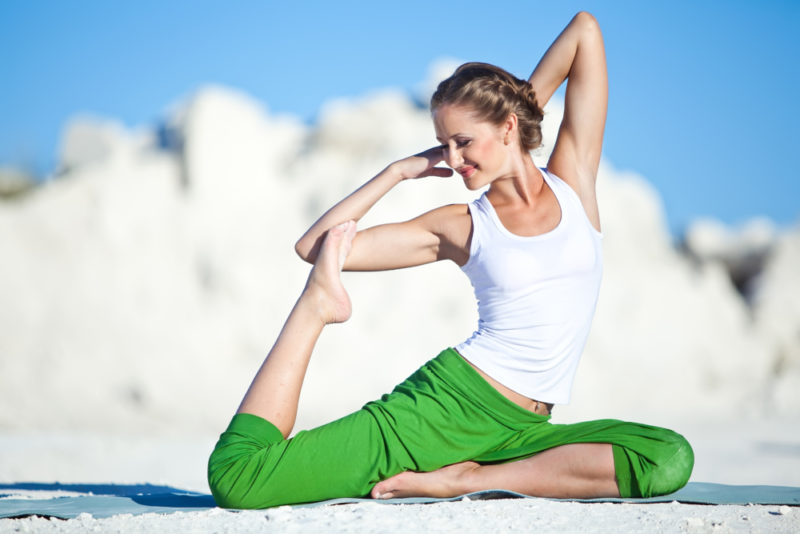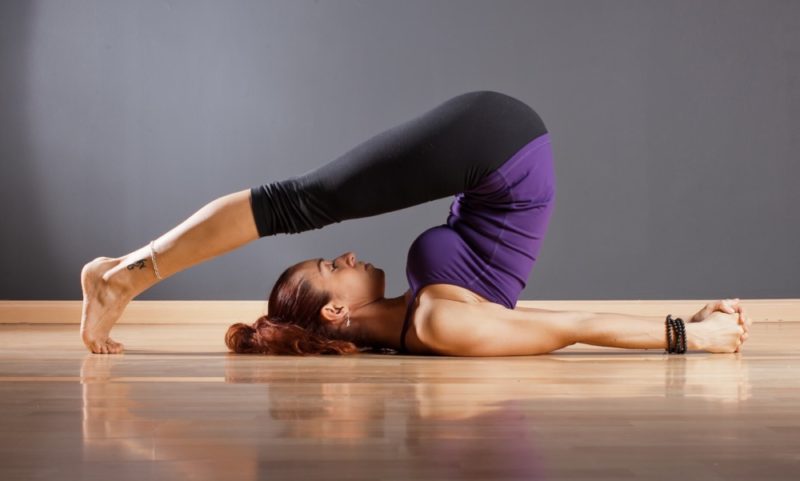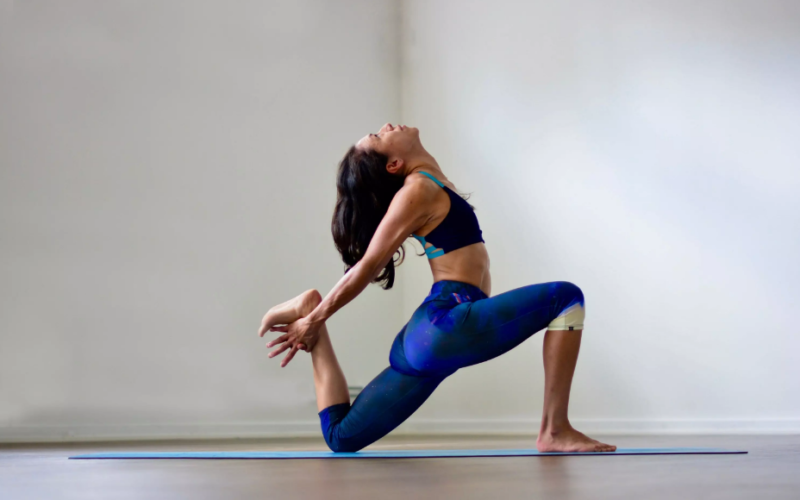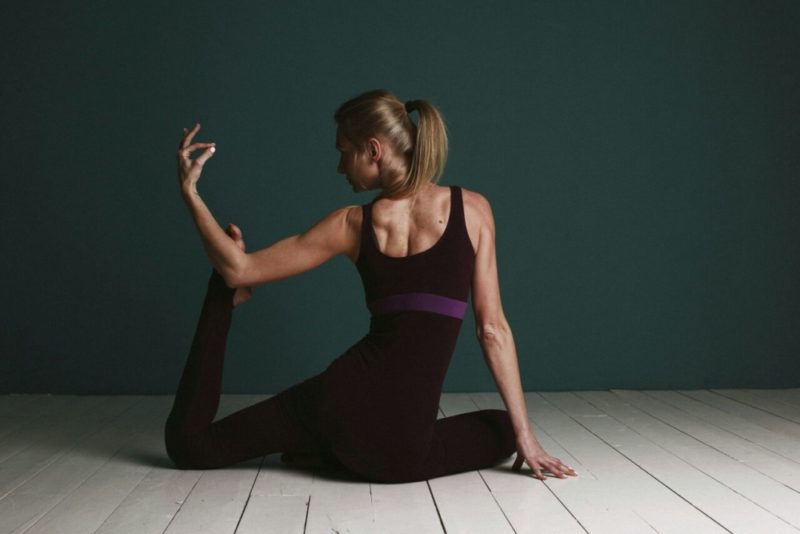Despite the antiquity of origin, yoga practices do not lose their relevance even in our century, spoiled by technological discoveries. One of the most famous and popular areas, hatha yoga is an ideal opportunity to achieve harmony of body and spirit, accessible even to people who are not familiar with esoteric teachings and who have never practiced such techniques.
Material Content:
- 1 What is hatha yoga, history of direction
- 2 The essence and purpose of hatha yoga
- 3 Description of the four constituent elements
- 4 The benefits of popular practice
- 5 Contraindications for practicing yoga
- 6 Class preparation
- 7 Hatha Yoga Asanas
- 8 Beginner exercises, the very first poses
- 9 Difference of direction from other systems of a healthy lifestyle
What is hatha yoga, history of direction
Although many of us have heard more than once about the existence of the teachings of Hatha Yoga, what it is, and what its essence is, only those who are familiar with all kinds of practices of the direction represent.
According to legend, hatha yoga is secret knowledge that the supreme Hindu deity Shiva transmitted to people through his wife Parvati.
From the point of view of science, the classical teaching techniques were formed and systematized from the 10th to the 13th century in the territory of Central and Western India.
Several texts about the doctrine — Hatha Yoga Pradipika, dated to the 15th century, and two later editions, Gheranda Samhita and Shiva Samhita, written on behalf of Shiva, have survived.
It is characteristic that in the classical texts on hatha yoga it is Shiva who is mentioned as the first guru - a teacher who transfers his knowledge to his followers and students.
Hatha yoga is one of the common philosophical ramifications of the Indian spiritual practice of yoga. There is a misconception that the meaning of various areas of yoga is to perform certain exercises. In fact, hatha yoga is based on the philosophical basis of Hinduism and Buddhism, and its study provides not only physical aspects, but also spiritual and mental.
The essence and purpose of hatha yoga
Yoga is a concept that provides for the release of consciousness from the emotions, desires or thoughts traditionally inherent in a person. Whereas “hatha”, translated from Sanskrit, means the merging of two energies - the male mantra “ha” and the female “tha”, because it is the unity of male and female energy that is the source of life.
Combining these concepts, hatha yoga involves controlling internal energy, working with the body, aimed at spiritual development and awareness of one’s nature.
The main goals of the followers of hatha yoga:
- good health and longevity;
- development of body flexibility;
- discovery of kundalini - human material energy;
- complete harmony of the mental and physical principles;
- achievement of an elevated level of state of mind and body;
- identification of one’s spiritual essence with an absolute and infinite beginning;
- enlightenment, absolute clarity and peace of mind.
To achieve psychophysical harmony with the help of hatha yoga, both physical and mental means of influencing the body are used - exercises, breathing, meditation.
The highest goal of life of any living creature in Buddhism is to achieve a state of nirvana that liberates oneself from suffering. The implementation of Hatha Yoga practices is the first step in this direction, the preparatory stage for further self-improvement and transition to the next direction of yoga - Raja Yoga.
Description of the four constituent elements
Despite the fact that hatha yoga is considered part of the philosophy of Hinduism, this direction has nothing to do with religion.
The system of all impact techniques in teaching is aimed at working with the body, and its main tasks are the formation of a proper attitude to one’s health, training in proper nutrition systems, as well as methods of psychoemotional and physical cleansing.
Four chapters of the text “Hatha Yoga Pradipika” are devoted to the description of practices that are necessary for mastering Hatha Yoga.
"Asana." The chapter is devoted to the description of 15 asanas and recommendations for proper behavior and nutrition. Yama and Niyama are the basic ethical principles of teaching.
- Pit - the rules of restraint in behavior. Based on the main ethical principle of hatha yoga - non-violence, including vegetarianism, and provides for actions directed against evil, and not against the people from whom it comes - truthfulness, abstinence, lack of attachment to material wealth.
- Niyama is the principle of the development of spiritual virtues. Among them - cleanliness, morality of statements, lack of negative emotions, thoughts and motives, optimism, spiritual conviction, cultural development.
- Asanas are seated, steady and comfortable postures for meditation or impact on the body. The special position of the body during classes allows you to redistribute the load on the muscles, relieve stress and cramps and achieve psychophysical perfection.
Pranayama. The chapter is devoted to the practice of internal purification.
- Pranayama is a method of conscious breathing. It allows you to control vital energy (prana) and control emotions through a system of special exercises. An additional effect is massage of internal organs, strengthening the health of the respiratory and nervous systems, improving the adaptive function of the body.
- Shatkarma - techniques for cleansing the internal organs - nasal passages, ears, surfaces of the oral cavity, digestive tract, eyes and certain parts of the brain.
"Wise." In classical hatha yoga, special positions of the hands, eyes, tongue and other parts of the body are used. This is wise.There are several meanings of this word - “seal”, “power”, “gesture”, “giving joy”.
In practical terms, mudras are tools for expressing internal energy and psychological processes.
Also wise:
- help normalize the flow of prana;
- allow a non-verbal outline of a person’s position or condition;
- improve health;
- normalize the aura;
- contribute to the expansion of consciousness.
In addition, this chapter describes the nadi channels through which prana moves, Kundalini energy, and also bandha practices.
- Bandha. The concept of “bandha” is translated as “squeezing” or “holding”. Performing bandha practices involves the contraction, contraction or tension of various parts of the human body - muscles and organs. As a result of holding the state of tension in the organs, a person gets the opportunity to control and stimulate them, as well as influence on the psyche. The ultimate goal of the practice is to increase the body's sensitivity to a state of high awareness.
- Kundalini. According to the teachings of Hatha Yoga, the physical energy of Kundalini is concentrated at the base of the human spine. In ordinary people, this energy is in a sleeping state. Performing various yogic practices allows you to awaken the Kundalini and start its upward movement. It is believed that after the awakening of the Kundalini, a person comes to realize the unity of everything that exists and the state of liberation from illusions.
- Nadi. The movement of the vital energy of prana occurs through the channels of the nadi, originating in the region of the heart and around the navel. Many people have blocked these channels. The practice of hatha yoga helps to clear nadi. Kundalini ascends through the central channel of the nadi after awakening.
"Samadhi." The fourth part of the text is devoted to the techniques of pratyahara, dharana, dhyana and samadhi, necessary for controlling the mind, breathing and feelings and liberating them from their influence during life.
- Pratyahara is aimed at subordinating the senses, so that a person gets the opportunity not to depend on them.
- Dharana - a state of contemplation, the possibility of a prolonged concentration of attention on something. It is considered a preparatory stage before applying the techniques of dhyana and samadhi.
- Dhyana is a state of intuitive vision, contemplation. Calming the mind. The possibility of termination of mental activity.
- Samadhi is the ultimate goal of meditation, a state of calm consciousness, the stage preceding nirvana.
The benefits of popular practice
From the point of view of human benefits, yoga practice is of great importance, because it allows not only to improve health, but also to make the body strong and stress-resistant.
The action of yogic practices has a comprehensive, comprehensive effect on both the body and the psyche:
- body training improves physical ability;
- there is the development of intellectual abilities, erudition, creativity;
- metabolism is normalized;
- vision is restored;
- the nervous system is strengthened;
- increased concentration and memory;
- digestion processes return to normal;
- hormonal levels stabilize;
- psycho-emotional state comes into harmony.
There are frequent cases when the decision to practice hatha yoga dramatically changes a person’s worldview. The transition to awareness creates a desire for self-realization and further improvement, and life takes on a new meaning.
Contraindications for practicing yoga
According to doctors, hatha yoga also deserves attention as a tool for restoring health. It is proved that the practice of training brings healing to many common diseases - diseases of the musculoskeletal system, intestinal tract and genitourinary system dysfunctions.
In addition, Hatha Yoga practices are a powerful tool against stress, insomnia and depression.
It is believed that yoga classes have no contraindications.However, doctors insist that in some pathological processes, classes should be abandoned, or switch to more correct forms of practice.
The main contraindications to yoga classes:
- any serious conditions and injuries;
- mental disorders;
- pathological changes in heart tissue;
- bone infection;
- blood diseases;
- oncology.
If there are contraindications, hatha yoga classes are possible only individually and under the guidance of an experienced mentor.
Class preparation
In order for Hatha Yoga lessons to be beneficial, you need to make small preparations before they begin.
It should be remembered that any yoga practice does not accept violence - including self-abuse, and should not bring a feeling of discomfort.
Therefore, it is necessary to exclude the possibility of inconvenience in advance:
- Prepare a set of comfortable clothes - soft and tight, but stretching. Loose fit clothing is not recommended for practice.
- Do a pedicure because hatha yoga classes are always barefoot.
- Get a special rug, lightweight and non-slip.
- Adjust the power. Reception of heavy food is possible no later than two hours before the start of classes. An hour before the start of the practice, a light snack with dairy products or fruits is allowed, and half an hour a glass of water.
You need to be prepared for the fact that not everything will turn out right away. It is important to remember that in hatha yoga, it is only the quality of the practice that matters, not their quantity or intensity. If something did not work out, it’s not scary - mastery comes only to those who have patience.
Hatha Yoga Asanas
In terms of complexity, Hatha Yoga asanas are divided into three types - for beginners, intermediate-level yogis and experienced yogis.
Depending on the type of techniques used, asanas can be performed - standing on one leg, on the arms, on the head, as well as sitting, in a twisting pose, in the form of bends, lying down.
Different types of asanas can have different effects on the body:
- stretching - involve the muscles of the back and chest;
- twisting - allow you to strengthen muscle groups located in the lateral parts of the body;
- inverted (royal) - poses in which the pelvis rises above the level of the head;
- squeezing - putting pressure on internal organs or parts of the body;
- relaxation - postures used for meditation.
From the point of view of medicine, each type of asanas has a spectrum of effects on internal organs, therefore, it has its own indications and contraindications for performance.
Beginner exercises, the very first poses
The group of hatha yoga practices for beginners consists of simple postures and is designed to strengthen muscles by stretching them. Usually the very first poses are performed in a standing position.
For example, Tadasana:
- Get up straight. The chest is straightened, the shoulders are free, the neck is relaxed, the arms are down, the legs are together - the feeling of heaviness of the body should fall approximately on the central part of the feet. Fingers gathered together.
- At the same time we tighten the stomach and tighten the buttocks. We look directly, breathe calmly. Keep the pose for 30 seconds.
This asana helps relieve nervous tension, and at the same time, correct posture.
To exit from Tadasana we make the maximum possible slope to the floor. The spine is straight, the fingers touch the feet. We maintain a pose for 20 seconds. If the stretching does not allow you to fully perform the asana, you can stop at the position that is most convenient.
Experienced yogis recommend that beginners do the exercises every other day to give the body the opportunity to relax and accumulate energy.
As muscle tissue strengthens, you can move on to more complex poses. It is important that the transition is smooth, without a noticeable increase in loads and sudden movements.
Difference of direction from other systems of a healthy lifestyle
For yogists, hatha yoga is the first step on the path to self-perfection, including the rejection of violence, compliance with ethical and moral standards, strengthening the health of the body and spirit, the desire for inner harmony.
Nevertheless, there are many areas that are positioned as a simple way to maintain a healthy lifestyle, and based on the selective use of Hatha Yoga Asanas. However, the ultimate goal and outcome of classes in these areas have nothing to do with yogic teachings, since they provide only for the improvement of a person’s physical fitness, without realizing his needs for spiritual development and growth.
In order to fully realize oneself in the practices of hatha yoga, it is necessary to understand that the body is an instrument of the soul in its knowledge of its potential and higher destiny. Only a healthy body is able to fulfill all the tasks of yogic practices and achieve the only important goal - the realization of one’s essence and the realization of the possibilities originally laid down in it by nature.


